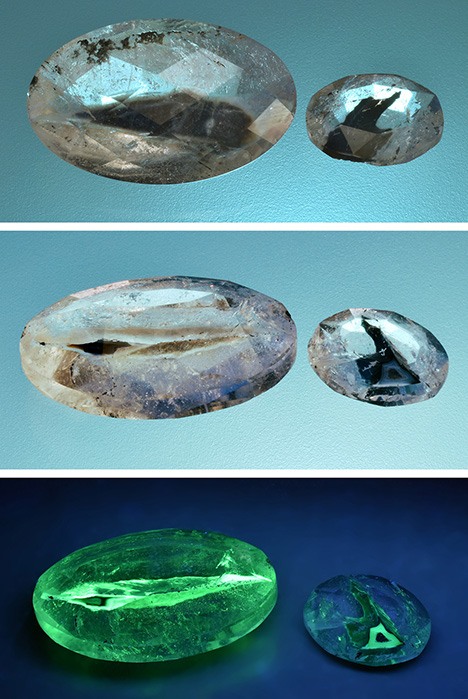Agates are undoubtedly one of the most common precious stones from Brazil. They come from basalts in the state of Rio Grande do Sul, on the border with Uruguay. This region is probably also the source of several unusual faceted quartz samples, purchased by the author in Brazil in 2019. These stones are up to 35 mm long and, except for abundant two-phase inclusions, contain flat, irregularly shaped inclusions. On two stones (see above), these inclusions reach the surface and show a typical agate structure, with several black, gray, and light brown layers. Their identity was proved by very weak quartz peaks in the Raman spectrum. Unexpected was their strong fluorescence in UV light, which is much stronger in short-wave UV. This fluorescence is concentrated in gray layers and is very likely caused by a trace presence of uranium, quite common in many agates and opals.
Navigation
CONTACT US
+ 32 475 722112
info@gemsexpertise.org
Diamond Plaza, Hoveniersstraat 55 2018, Antwerpen (Belgium)
Copyright 2021. Gems Expertise "VAT/TVA/BTW: BE0656610915""

